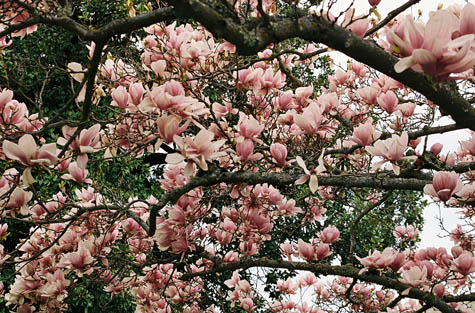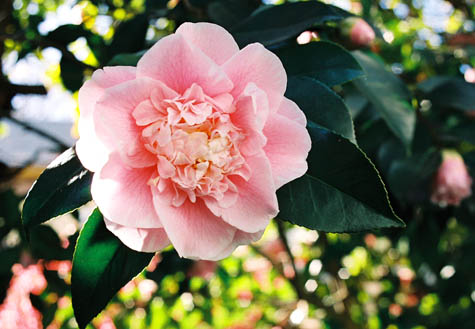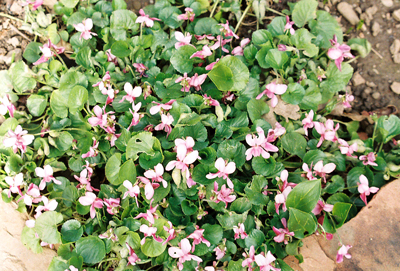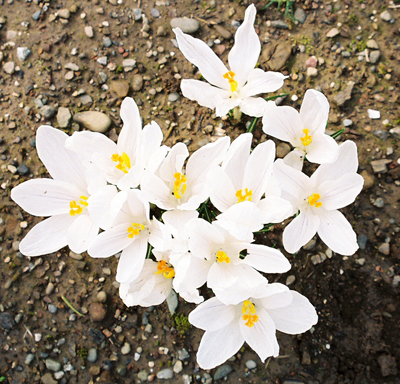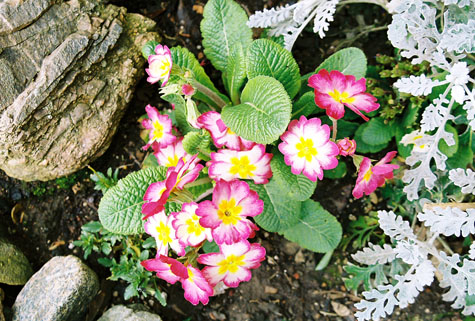
Well, dearies, I don’t know about you, but I am throwing myself fulltilt into spring gardening. And gardening in spring means Hard Work. You know it does. I’m fully into my fourth or fifth day of really getting down and dirty (literally). This is the part where we are stretching and bending and pulling and digging and really taking what I call The Winter Body and giving it a run for its money. You know the feeling, right? I can prune this bush. I can dig this big hole. I can reach that branch. I can lift the (cute) new doghouse (with a porch!!) and put it in the backyard all by myself. And then I soak in lovely lavender bathsalts and stretch and sleep and get up and do it all over again the next day. And so many times while I’m in the throes of challenging and pushing myself in the garden at this early time of the year I have had a kind of half-baked thought that if I would simply incorporate my background in yoga into my gardening work, I might have a pretty darn good practice, and, hey, I’d call that master multi-tasking! And then, behold, a smart cookie named Veronica D’Orazio wrote a book called Gardener’s Yoga: Bend & Stretch, Dig and Grow! Praise be! It’s published by the nice folks at Sasquatch Books up in Seattle.
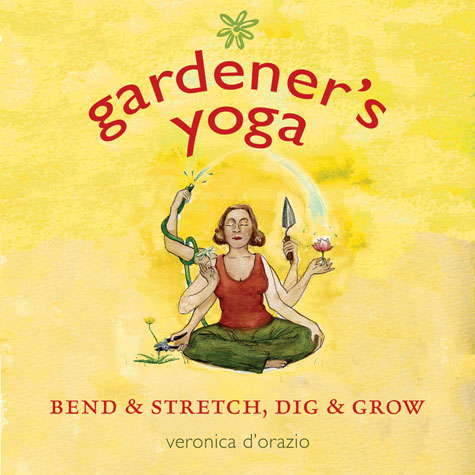
Pretty cute cover, I’d say, thanks to a talented illustrator named Tim Foss.
So from the get-go I could tell Veronica suffered from this same compulsion that I, and I am willing to bet you, also fall into. States she on the first page: “When I used to weed the garden I would enter some kind of bizarre green vortex where time seemed to stop. I experienced a strange, almost physical compulsion to clear and continue.” I know we all know exactly what you are talking about, Veronica. She goes on to describe the attending side effects of Living in the Green Vortex, my friends. “I would weed unceasingly. I forgot to eat. I forgot to socialize. Mostly, I forgot my body.”
Uh-oh. It gets worse.
“I would squat for three hours straight under the squash blossoms and then try to stand up. Stooped over and sore, I would hobble over to the hose…”
Uh, we get the picture, my dear. We have all been there (and still are, I bet!).
Anyway, she finally did learn to pay attention to her aching and loyal human vehicle, after what she describes as “the clincher.” [Why oh why must we always wait for the proverbial swinging door to hit us on our lovely patooshes??] Continuing in this frenzied pattern Veronica finds herself one blissful evening unable to stand up. “My back went out somewhere in the scented geraniums…” she laments. Now her body had her attention. Fortunately the solution lay closer to her than she might have imagined. Already a practioner of yoga Veronica begins to imagine how yoga might actually support a gardener in preventing injuries or the accompanying aches and pains that we all at times feel in manifesting our ambitious gardening endeavors. She notices the inherent links even in the names of some of the various poses: the tree pose; blooming lotus; mountain. These Sanskrit names which are over two thousand years old reflect a culture which had not isolated the body from the soul or the garden from the spirit. Ms. D’Orazio is a gifted, spiritually attuned writer and she deftly weaves the lines between the source of yoga and the source of gardening, all, in essence, one in the same.
What follows in Gardener’s Yoga are 21 poses, all beautifully illustrated by Mr. Foss, and eloquently explained by the author. Might I suggest this book as an invaluable companion to your gardening activities this year? If so, remember that as you approach each pose that what you are aspiring to is to reach only as far as you are comfortable. Here is the Easy Seat pose, a good beginning place:
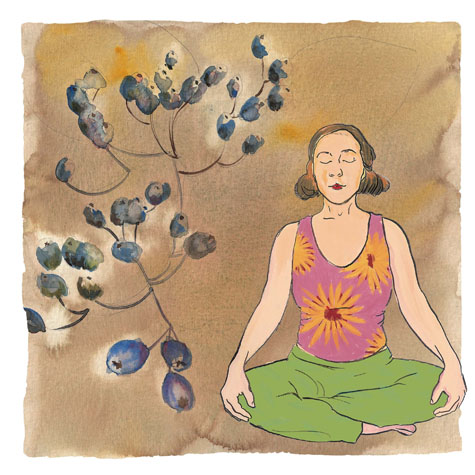
While it’s true there is a correct form for each pose, one does not begin at that state any more than a baby comes out walking. You could use this book as a guide. Moving into poses is instant feedback about what you were probably heretofore unaware of in your body. Or you kind of knew but were hoping it would go away. Fortunately one of the many gifts of yoga is that most likely those stiff places will eventually melt simply in the sheer act of feeling them, and stretching and breathing into them. Remember yoga was originally designed to assist people who meditate to sit for long periods without getting uncomfortable. It makes sense it would assist us in our gardens as a practice. Here’s the basic seated spine twist. Your organs love this one:

When I lived in North Carolina I had a long wooden back porch that faced a virtual forest of a back yard and there I would privately do my practice. In Arizona I managed to find a quiet corner in the front yard, always using a thick yoga mat. I have yet to find the perfect outdoor corner here, but I will join you in that quest. It’s the perfect time. Keep me posted on your progress, will you?
Love and blessings,
Kathryn xoxo
Posted on March 21st, 2008 by Kathryn
Filed under: Book Notes | 20 Comments »




